Unveiling the Long History of Chinese Wedding Attire

Weddings are a significant event in cultures all around the world, and one of the most captivating aspects is often the attire worn by the bride and groom. In China, traditional wedding outfits boast a rich history that spans thousands of years, evolving from the Hanfu of ancient dynasties to the more modern qipao. Each style carries its own cultural significance and symbolism. In this article, we will dive into the fascinating history of Chinese wedding attire and explore some of the most iconic designs.
The history of Chinese wedding attire is a tapestry of cultural evolution. For a poetic exploration, see Eastern Romance: The Evolution of Traditional Chinese Wedding Dresses.
Zhou Dynasty’s Black Wedding Attire
The Zhou Dynasty (1046–256 BCE) revered rituals, and its wedding customs, known as “Hun Li” (twilight ceremony), were deeply formal. As recorded in The Book of Rites, weddings occurred at dusk, symbolizing solemnity. Chinese wedding attire during this period featured black as the dominant color, accented with red. Black represented the heavens, while red symbolized the earth, embodying cosmic harmony.
Brides and grooms wore long, unified black robes with red hems, paired with black shoes. The minimalist design emphasized unity and loyalty, reflecting Zhou’s philosophical values. These Hanfu wedding dress styles laid the foundation for later bridal fashion, showcasing simplicity and reverence. For more on Zhou rituals, visit China Culture.
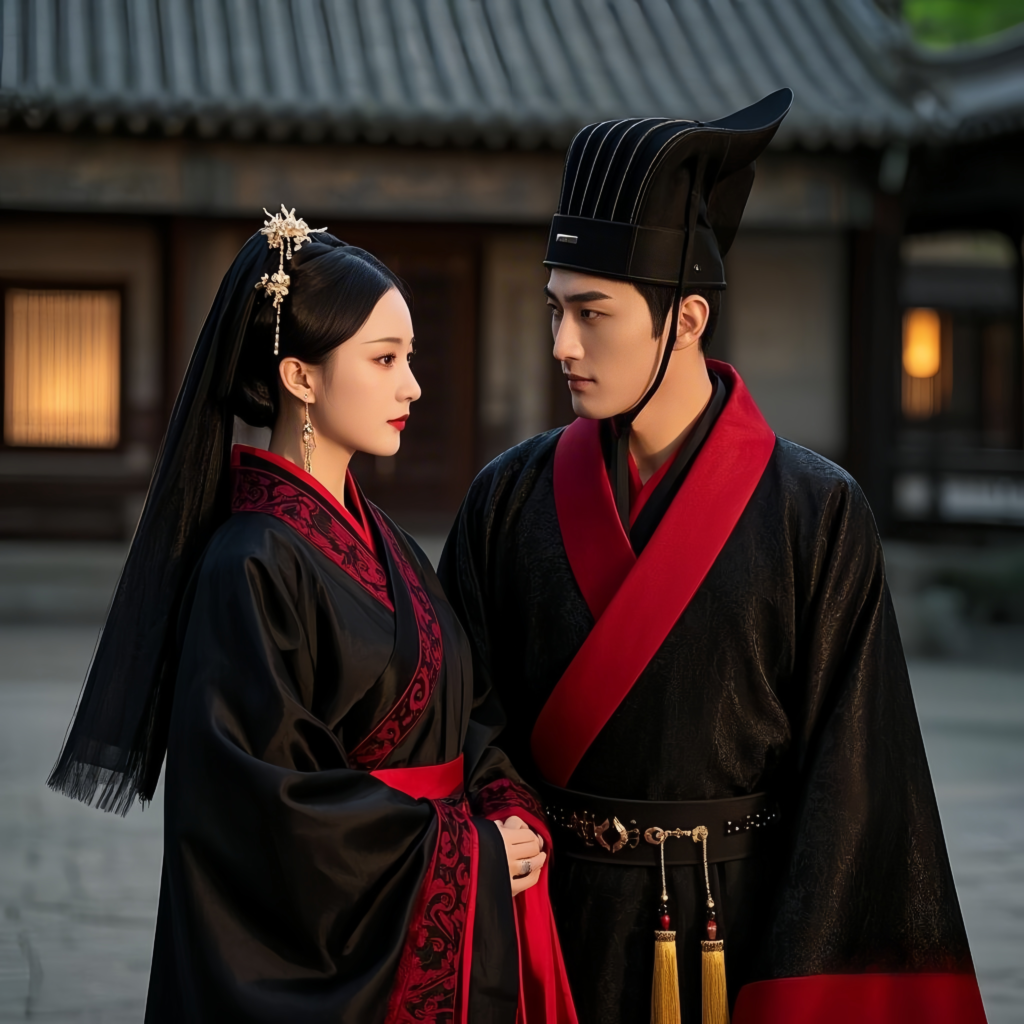
In this era, the groom wore a black long robe paired with a ceremonial hat, while the bride’s outfit was a black dress with a red hem. Both outfits were similar in design, consisting of long robes without separation between the top and bottom. Black shoes and knee-length robes were typical for both the bride and groom, reinforcing the idea of unity and simplicity in the marriage. Some scholars believe that this design symbolized the bride’s loyalty.
Han Dynasty Wedding Attire
The Han Dynasty (202 BCE–220 CE) brought vibrant Chinese wedding attire to life, as depicted in the poem The Peacock Southeast Flies. The bride, Liu Lanzhi, is described wearing an embroidered skirt, silk shoes, and tortoiseshell headpieces, her elegance unparalleled. Archaeological finds, like silk robes from Mawangdui, reveal intricate embroidery in red, yellow, and black.
Han Hanfu wedding dress styles varied, including one-piece robes or separates with short tops and long skirts. Waistlines ranged from high to low, with curved or straight collars. Black remained prominent, but vibrant colors and detailed embroidery reflected the dynasty’s artistic flair. Explore Han fashion at The British Museum.
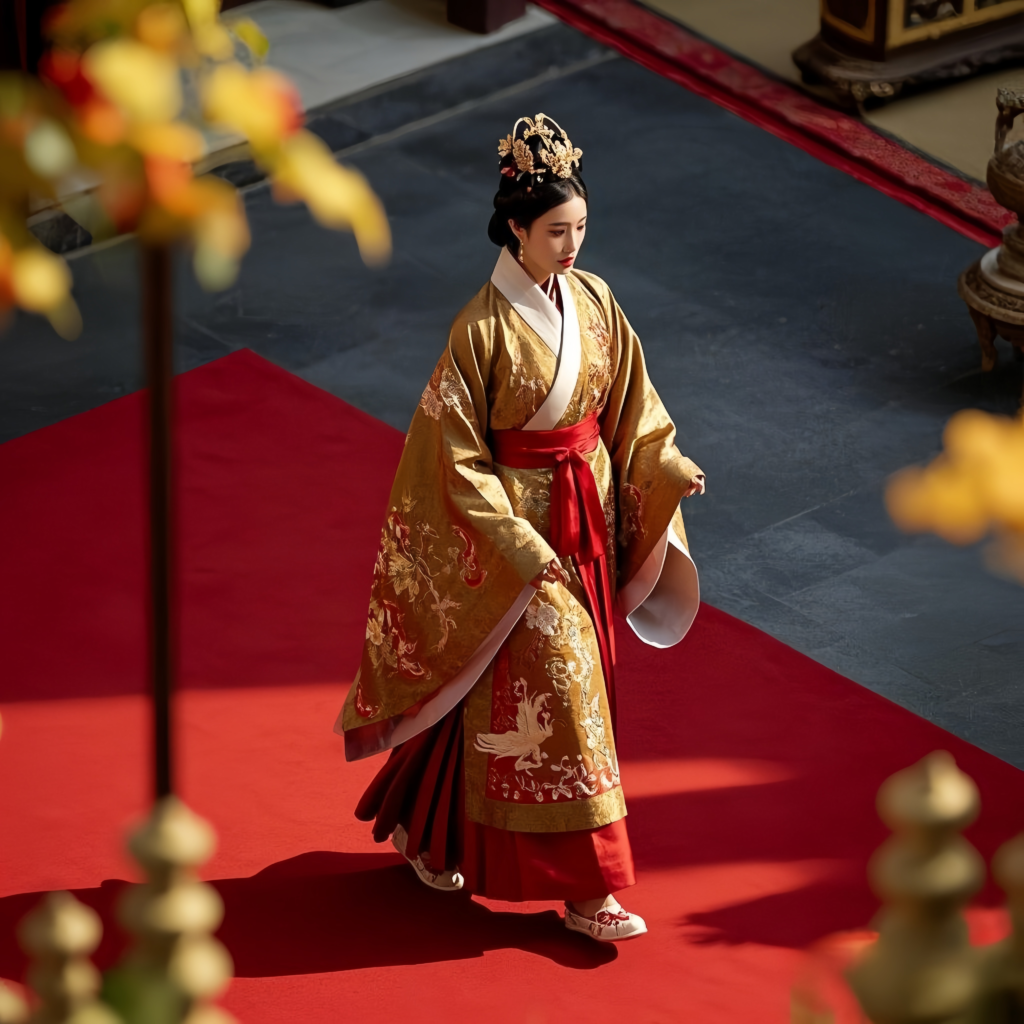
This description brings the bride’s image to life, detailing every aspect of her appearance—from her dress to her hair ornaments, waistbands, and shoes. In addition, the tomb of Mawangdui in Changsha has yielded numerous Han Dynasty relics, such as silk embroidered robes and skirts, providing us with valuable information about the fashion of the time.
Wedding dresses during the Han Dynasty came in various forms, including one-piece long robes and separates, such as a short top with a long skirt. The waistlines could be at the waist, chest, or high, and the collar styles varied between curved and straight. The embroidery during this time was also incredibly intricate, with vibrant colors such as red, yellow, and black, and black remained the dominant color due to the lingering influence of the Zhou Dynasty.
White Wedding Attire in Ancient China
During the Wei, Jin, and Northern and Southern Dynasties (220–589 CE), white Chinese wedding attire gained prominence, challenging modern associations with mourning. Paintings like Gu Kaizhi’s The River God depict women in flowing, wide-sleeved white robes. The East Palace Old Tales describes a Jin prince marrying in a white robe with a veil, symbolizing purity and simplicity.
These Hanfu wedding dress designs embraced philosophical ideals of minimalism, with light fabrics and elegant hairstyles. White’s prominence in weddings highlighted the era’s cultural shift toward understated beauty, a contrast to later dynasties’ vibrancy.
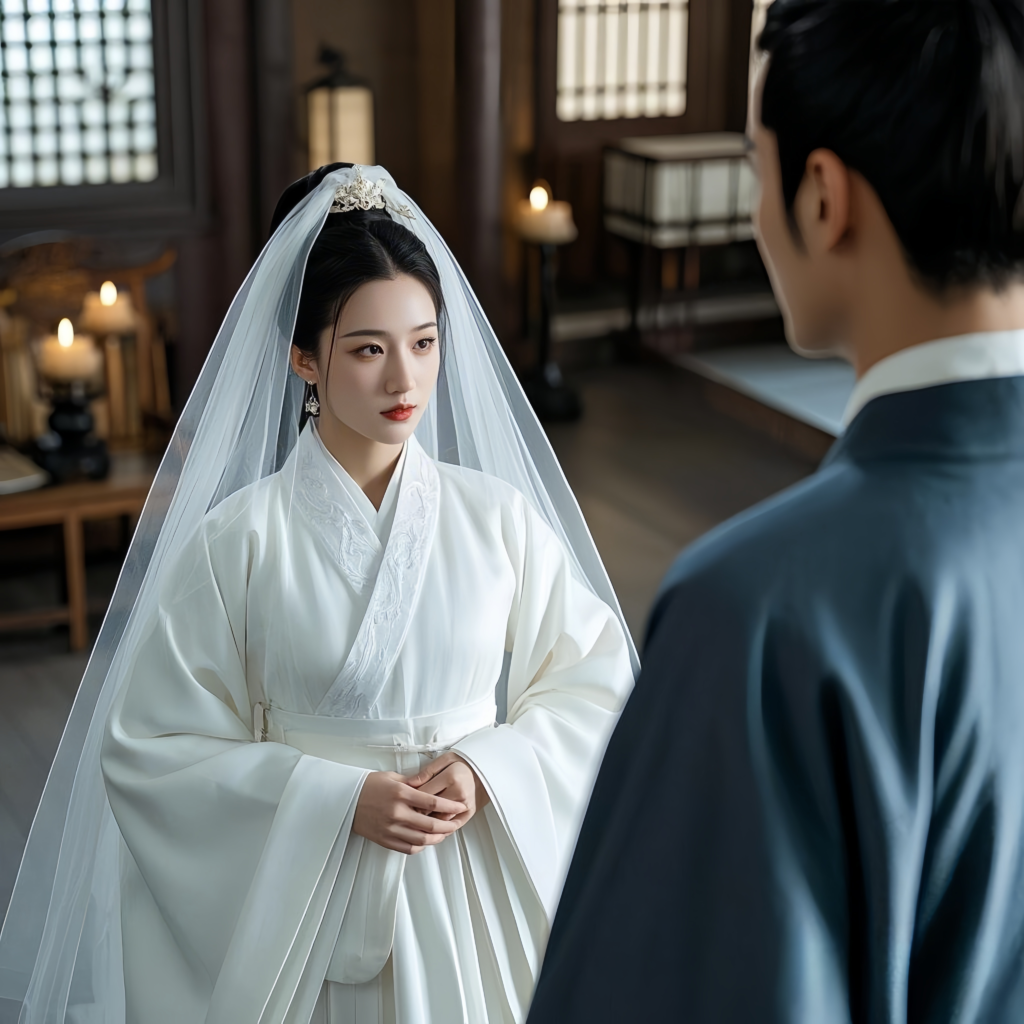
Tang and Song Dynasty Wedding Attire: Bold and Elegant
The Tang Dynasty (618–907 CE) was a pinnacle of opulence, and its Tang Dynasty bridal attire reflected this grandeur. Brides wore deep red or blue gowns with floral hairpins and leather belts, while grooms donned red official robes. The vibrant colors and luxurious details matched the dynasty’s exuberant spirit, as noted in historical texts like Tang Huiyao.
In contrast, the Song Dynasty (960–1279 CE) favored restraint. Song Dynasty gown designs, such as the Da Shan, featured long sleeves and muted blue tones, reflecting Confucian elegance. While inspired by Tang styles, Song Chinese wedding attire prioritized simplicity, balancing tradition with refinement. Learn more at The Metropolitan Museum of Art.
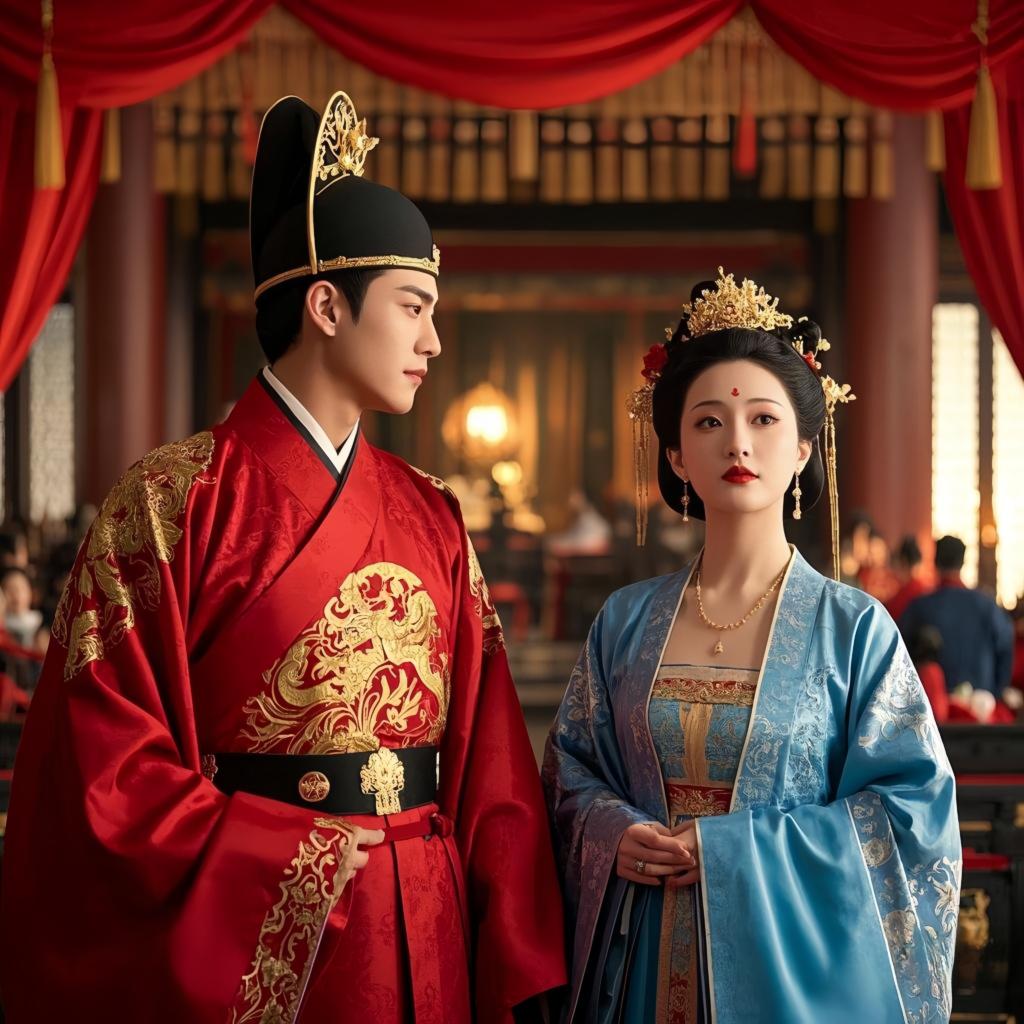
In contrast, the Song Dynasty, which succeeded the Tang, opted for a more subdued style. Wedding dresses from this time were based on Tang designs but were more understated and simple. The Song Dynasty’s bridal attire, known as the “Da Shan” (大衫), featured long sleeves and often used a muted blue color, reflecting the dynasty’s preference for quiet elegance over extravagance.
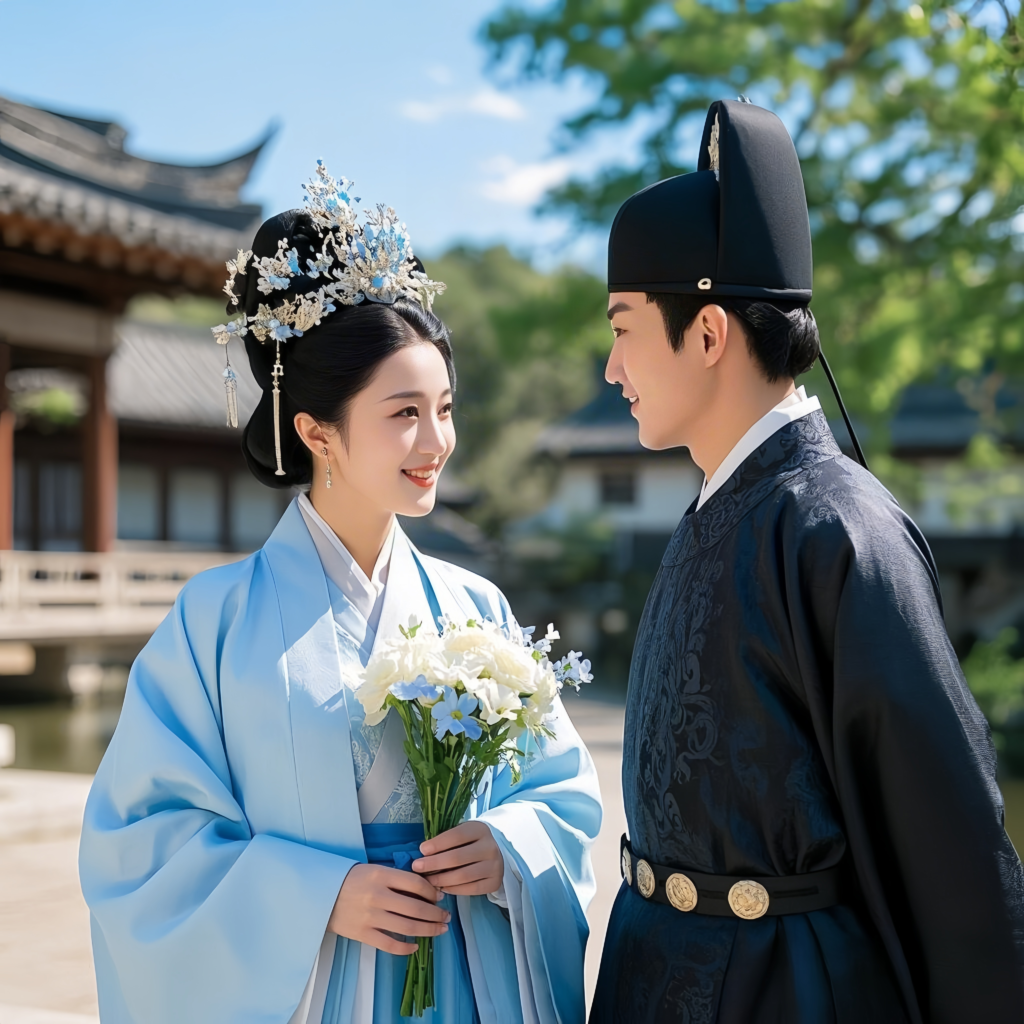
The Classic Red Wedding Attire of the Ming Dynasty
The Ming Dynasty (1368–1644 CE) cemented the Ming Dynasty red dress as a wedding staple. Red, symbolizing joy and vitality, became accessible to commoners, marking a cultural shift. Brides wore red tops with pleated skirts, paired with the ornate phoenix crown, a headpiece adorned with gold and jade. Grooms matched in red robes, embodying prosperity.
The Ming Dynasty cemented the red dress as a wedding staple. If you’re planning a Ming-style wedding, follow these steps.
The Ming Dynasty red dress evolved, with skirt lengths standardizing for elegance. This iconic Chinese wedding attire remains a symbol of tradition, inspiring modern designs. For Ming fashion insights, visit Smithsonian’s Freer Gallery.

The Ming Dynasty also saw the introduction of the iconic phoenix crown, an ornate headpiece worn by brides, and the wedding attire of this period became a symbol of the traditional Chinese wedding we recognize today. The red wedding dress remains one of the most prominent symbols of Chinese wedding attire and continues to be a staple in modern Chinese weddings.
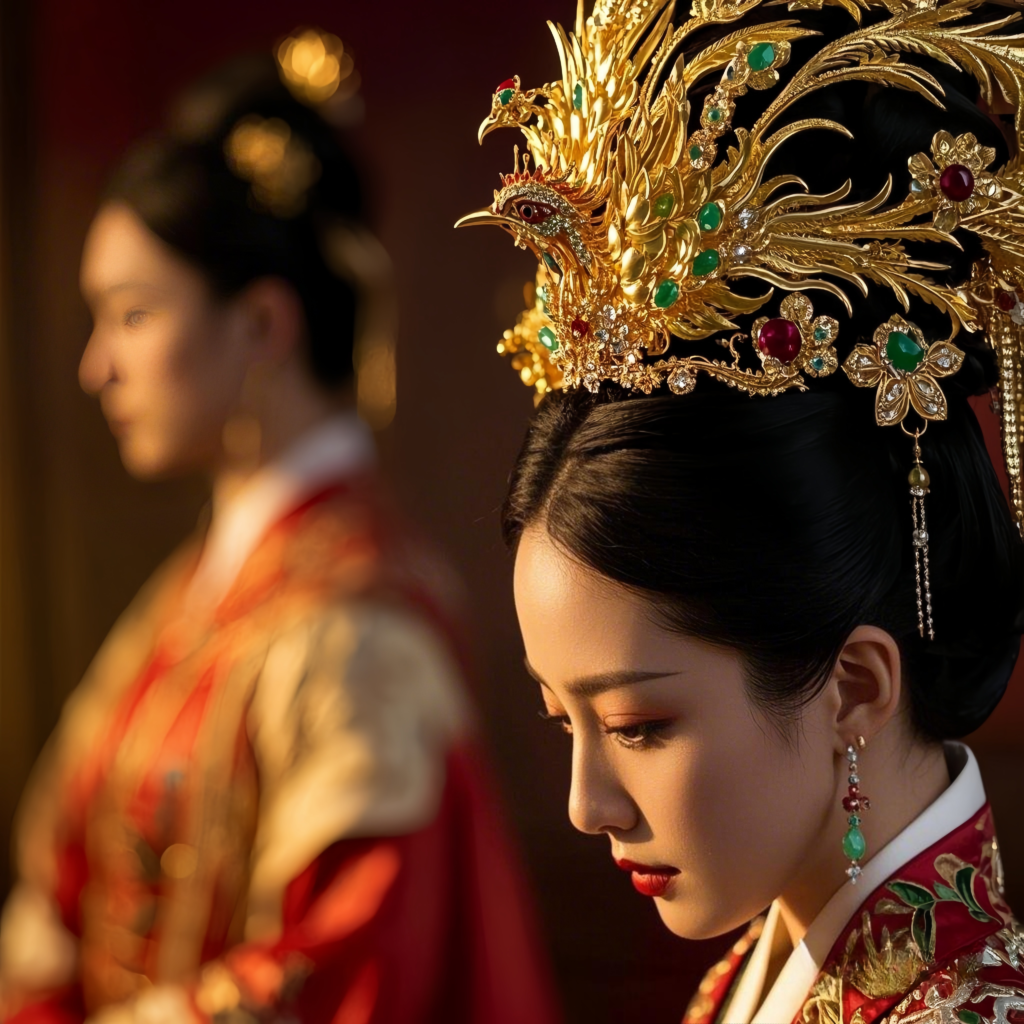
Conclusion: A Legacy of Tradition
The history of Chinese wedding attire is a tapestry of cultural evolution. From Zhou’s black robes to Ming’s vibrant red gowns, each dynasty added unique elements to the Hanfu wedding dress legacy. These garments transcend fashion, embodying love, heritage, and identity. In 2025, the Ming Dynasty red dress remains iconic, but the diversity of ancient styles offers endless inspiration. Explore modern Chinese wedding attire on platforms like Etsy to bring this timeless elegance to your wedding.





Responses